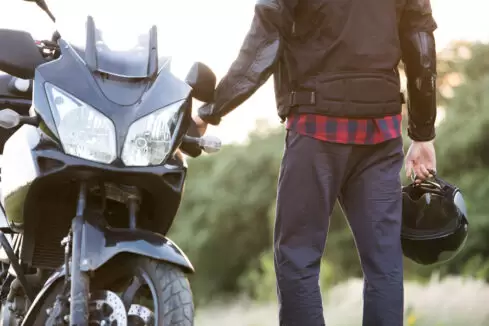It’s no secret that purchasing your very first motorcycle is an exciting milestone, but it’s important to approach it with a clear budget in mind. Motorcycles offer a thrilling experience and can be more economical than cars. In fact, there are 100,000 motorcycles registered in the state of Kentucky alone. However, they come with their own set of expenses. Here are some essential budgeting tips to help you manage the costs of buying and owning your first motorcycle.
1. Determine Your Budget Range
Before you start shopping, establish a realistic budget for your motorcycle. This should include the cost of the bike itself and additional expenses. Consider your total financial situation, including your income, savings, and other financial commitments.
Decide on the maximum amount you’re willing to spend. This helps narrow down your options and prevents overspending. If you plan to finance the motorcycle, research interest rates and monthly payment options. Ensure the payments fit comfortably within your budget.
2. Factor in Additional Costs
The purchase price of the motorcycle is just the beginning. Be sure to account for these additional costs:
- Insurance: Motorcycle insurance can vary widely based on factors like the type of bike, your riding experience, and your location. Get quotes from multiple insurance providers to find the best rate.
- Registration and Taxes: These costs depend on your state or country’s regulations. Include fees for registration, title, and sales tax in your budget.
- Safety Gear: Invest in high-quality gear such as a helmet, gloves, jacket, and boots. Safety gear is crucial and can range from a few hundred to over a thousand dollars.
- Maintenance and Repairs: Regular maintenance is essential to keep your motorcycle in good condition. Budget for routine services such as oil changes, tire replacements, and unforeseen repairs. CNBC reports that auto repair costs, including motorcycles, were up 20% last year.
3. Choose the Right Motorcycle
Selecting a motorcycle that fits your budget and needs is crucial. Consider the following when choosing your bike:
- Type of Motorcycle: Different types (sport, cruiser, touring, etc.) come with varying price ranges and maintenance costs. Choose one that suits your riding style and intended use.
- New vs. Used: New motorcycles come with warranties and the latest features but are more expensive. Used bikes are generally cheaper but may require more maintenance. Research the market and compare prices for both new and used options.
- Research Models: Look into the reliability and cost of ownership for different models. Some brands and models may have higher repair costs or require more frequent maintenance. Make sure that the bike you purchase has a high safety rating as well. Car accidents result in 1.3 million deaths worldwide in 2021 alone, and motorcyclists are extremely vulnerable on the road.
4. Budget for Gear and Accessories
In addition to the motorcycle itself, you’ll need to budget for essential gear and accessories:
- Helmet: A good helmet is a must for safety. Choose one that meets safety standards and fits comfortably.
- Protective Clothing: Jackets with armor, riding pants, and gloves provide protection and comfort. Look for gear designed for motorcycle riding.
- Accessories: Consider adding accessories like saddlebags, a tank bag, or a GPS, but budget these into your total expenditure.
5. Plan for Regular Maintenance
Motorcycles require regular maintenance to ensure they run smoothly and safely. Budget for oil changes, tire replacements, brake checks, and other routine maintenance tasks. Check the manufacturer’s recommendations for service intervals. Set aside an emergency fund for unexpected repairs. Mechanical issues can arise, and having a financial cushion can help manage these expenses.
6. Save on Fuel Costs
Motorcycles typically offer better fuel efficiency than cars, but fuel costs can still add up. To manage this expense, research the fuel economy of the motorcycle model you’re interested in. This helps estimate your monthly fuel expenses. Fuel prices fluctuate, so keep an eye on local gas prices and try to refuel when prices are lower.
7. Factor in Storage Costs
If you don’t have space to store your motorcycle at home, you may need to rent a storage unit. This adds an additional expense to your budget. Make sure you have a secure place to store your motorcycle, such as a garage or a dedicated space. If renting storage, compare prices and choose a secure facility that fits within your budget.
8. Consider Riding Classes
Taking a motorcycle safety course is a valuable investment. Not only does it improve your riding skills, but it can also potentially lower your insurance premiums. Research the cost of local motorcycle safety courses. Many courses offer comprehensive training and can be a worthwhile investment. Some insurance companies offer discounts to riders who complete approved safety courses.
9. Plan for Long-Term Expenses
Owning a motorcycle involves ongoing costs beyond the initial purchase. Insurance premiums are typically paid annually or semi-annually. Budget for these regular payments. Depending on your riding season, you may need to prepare your bike for storage during off-seasons or get it ready for the riding season.
10. Track and Adjust Your Budget
Keep track of all your motorcycle-related expenses to ensure you stay within your budget. Use a spreadsheet or budgeting app to monitor your spending on the motorcycle and related costs. Regularly review your expenses and adjust your budget as needed. If you find you’re spending more than planned, look for areas to cut back.
Budgeting for your first motorcycle involves more than just the purchase price. By considering additional costs such as insurance, maintenance, and gear, and planning for both regular and unexpected expenses, you can enjoy your motorcycle experience without financial stress. Research thoroughly, choose a motorcycle that fits your budget and needs, and manage your expenses carefully to ensure a smooth and enjoyable ride. With careful planning and budgeting, you’ll be able to fully appreciate the freedom and excitement that comes with owning your first motorcycle.

